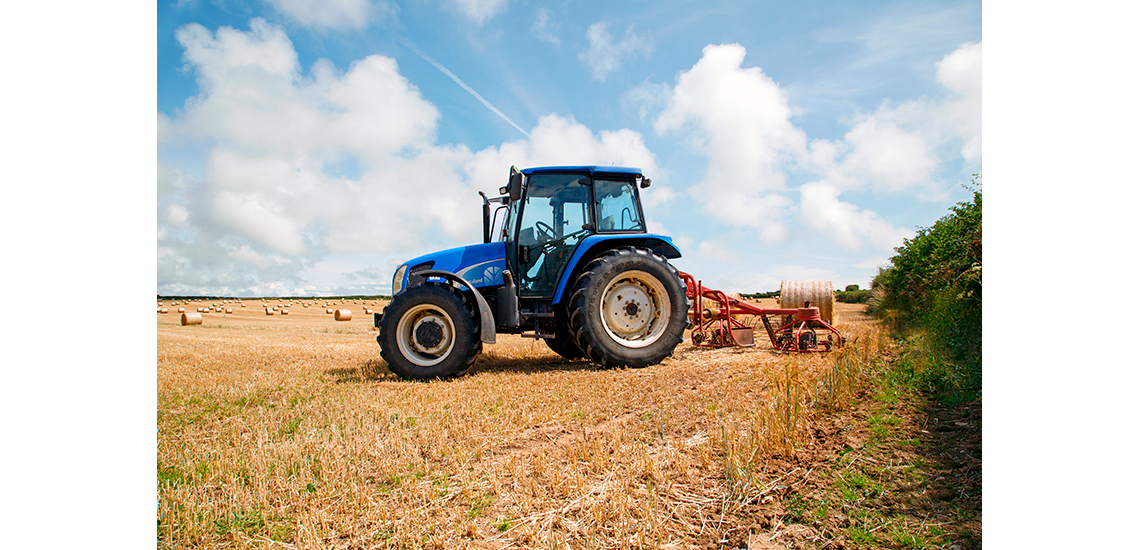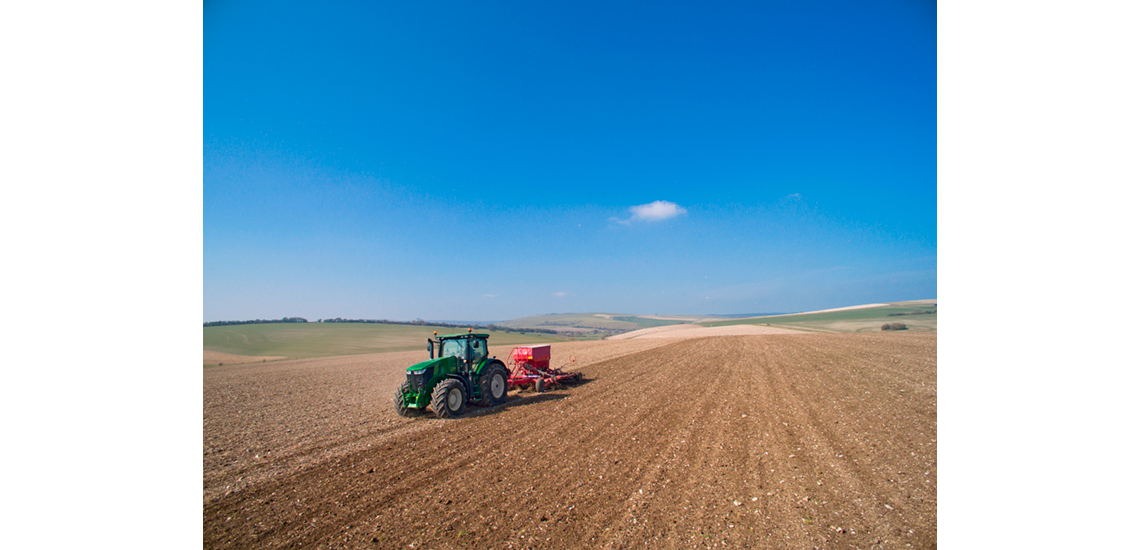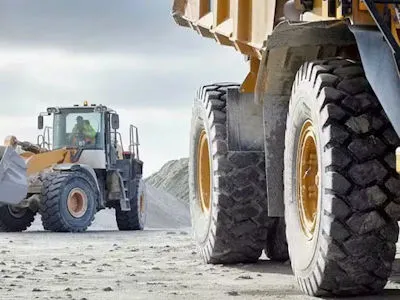Part 11 in the Industrial Tyres feature takes us to Canada, the home of Camso as we talk to Darren Stratton, the Product Management Director at Michelin.
Camso’s Darren Stratton Interviewed by Commercial Tyre Business
With the material handling sector at the heart of international trade in ports and airports, we commenced by quizzing Stratton, on the impacts that the manufacturer had seen during the pandemic. Stratton summarised the situation underlining how the impacts have been “numerous” and are “still continuing today”.
He expanded, “In some European and North American markets, we are starting to come out the other side of it, with the availability of vaccines, but certainly when we look towards India and other parts of the world, they are still in midst of a tough fight.”
According to Stratton, the first part of Camso’s response focused on protecting the company’s employees and families as they got to grips with remote working for the staff that could work from home, to then ensuring that the workforce in manufacturing, service, sales, warehousing and operations were protected with all the relevant PPE and were aware of the COVID protocols if a variant entered the building. This Stratton explained caused “a lot of impact”.
From a business perspective, Camso’s experience was a story we had heard from other manufacturers, as major economies such as China and leading European countries enforced strict lockdowns and shut down their economies, which lead to the original equipment manufacturers pushing the off switch on their production lines and dealers winding down their operations to the minimum level. This was followed by a recovery of sorts as in Stratton’s words, “business rebound very, very quickly, which drove a lot of demand.”
In terms of Camso’s strategy, Stratton confirmed that it “changed a bit day by day”. He explained, “The strategy was to try and take care as many customers as we possibly could. We had a big focus on primarily those with contracts such as your original equipment manufacturers, who were considered a critical resource in the same way that doctors and nurses were. So they had to have machinery to move product, move food, pharmaceuticals, PPE and so on. They were considered a critical part of infrastructure, so they were a critical partner as well, meaning we made sure to keep our OEMs at full production.
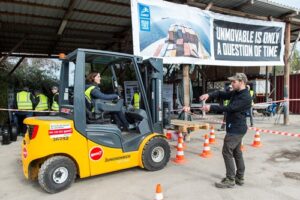
“Secondly, we had our national accounts (freight companies, food and beverage, pharmaceutical companies), who had multiple distribution centres across multiple states or countries that are supporting evert aspect of the economy. We needed to make sure that these guys are up and running and doing everything they can.”
A common theme across the tyre sector during the pandemic has been those companies that have benefitted from production shortfalls suffered by their competitors. Naturally, we wanted to find out what Camso’s experience had been like in this regard. Stratton firstly had some glowing comments for his colleagues in production, “We have not run out of product, which is quite frankly amazing. The product hasn’t been at the level we would anticipate, but it has been flowing well and I can’t thank our teams enough for that.
“In terms of business, we have managed to maintain our core business for sure and in some cases, we have managed to deepen that relationship whereby sometimes they may not be necessarily happy with us, but we’ve operated with a good deal of transparency to show exactly where we are, where our challenges are which has been greatly appreciated by our customers.”
In relation to those aforementioned business opportunities, Stratton added, “we have had a number of opportunities come from our competitors at all levels, both OE and the aftermarket. That’s either due to a lack of product or a lack of transparency that hasn’t been appreciated by their customers. With that, we have been upfront and explained the challenges and how we can help. That transparency has come a long way for us.”
Besides focusing on delivering for original equipment manufacturers and their national accounts, it’s clear to see that a transparent and collaborative approach with their client has been at the core of Camso’s strategy. This approach has seemingly served the manufacturer well in an environment where competitors have struggled to maintain production flows and a supply chain that has been hugely disrupted by the Suez canal blockade and a container crisis, which according to the Financial Times has seen the cost of shipping a 40-foot container from Asia to northern Europe sky rocketing from about $2,000 in November 2020 to more than $9,000.

Hydrogen Fuel Cells, Electrification and AGVs Driving Developments in Material Handling Sector for Camso
Notwithstanding a business environment that is having to deal with a global pandemic and a supply chain under stress, the material handling sector has its own set of trends and fashions are dictating the way the sector is moving forward. For Stratton and Camso, the first main trend shaping the sector is that of electrification and more intriguingly hydrogen fuel cells.
Stratton explains, “This (electrification and hydrogen fuel cells) is a big factor at the moment, talking to some equipment dealers as they’re seeing as many as 80% of their fleets that they’re selling as electric. This was probably 20-30% three-four years ago. That’s pretty eye-opening.”
So, what does this mean for Camso’s product development team? Stratton clarified that it meant that the company would need to have some alternate focus on things such as rolling resistance.
He adds, “For example, batteries obviously take time to charge and the more you can get out of the battery before having to recharge it, the better. It’s no different from vehicles when we talk range, so rolling resistance is a very, very big focus for us moving forward to guarantee we are offering the best possible range for those batteries.”
The second main trend that is shaping a lot of discussion in material handling sector is the shift towards automatic guided vehicles (AGVs), with it becoming more apparent in different markets and not only warehousing according to the Product Management Director at Michelin. He continues, “we are seeing more automated forklifts and more of target type machines pulling carts and trains where they don’t need an operator. We are seeing automatic vehicles that are moving containers from the quayside to storage.”
One of the main drawbacks using the AGVs is that with no operator, it is very difficult to identify tyre issues, meaning that the vehicle will just continue running until someone notices that there is a problem. The result of this for Camso is that according to Stratton, the manufacturer will need to “make tyres that are robust enough to absorb that abuse”.

The latest launch on the Michelin side as reported in Part 8 of our Industrial Feature in the form of the MICHELIN X AGVEV goes some way to meeting the increased demand and usage of AGVs in ports. Stratton stressed that this is the ‘first iteration of this product’, but that next year it will be expanded further with a broader range of sizes.
Moreover, the question of connectivity is one which rears its head continuously in the tyre sector and this is an issue that is starting to make its presence known with forklifts too. Stratton said, “These sensors that are being equipped know the speeds, where the forklift is going, if the vehicle has taken an impact and how the operators are behaving. So, at some point, it’s going to be a case where they are going to want to integrate the tyre into that system as well.”
Stratton did concede that it will be “a challenge”, how solid tyres would be integrated into that system. That being said, it is certainly something that is not beyond Camso and combined with the strength of Michelin it is well-position overcome any research and development test that is thrown their way.
Camso’s Product Range Arranged into Three Key Segments for Material Handling
Material handling is a sector and is no different to other sectors in that it requires a unique sales approach with the client base in the sector having their own sets of requirements. How do Camso go to market in the material handling sector? The first step Camso has taken was to separate material handling into three key segments: WLI (warehousing, logistics and industry), ports and GSH (ground support handling).
The reason behind this separation in products was explained by Stratton. “In the past, what we would traditionally do is develop a tyre with a counterbalance forklift in mind. And then we would say, ‘well this can work on this equipment in a port and airport.’ While it did work, it wasn’t the ideal solution. So now we have these segments.”

Stratton highlighted that the idea behind organizing their products in this way isn’t only product-orientated, but it is one which considers what services and solutions are unique to each segment as well, thus allowing Camso to bring to market what he refers to as a “total ecosystem”. It goes without saying but this approach to market on the face of it, allows Camso to have a tailored approach to each segment and facilitates them in delivering an individualised service to their customers.
And in terms of markets? What strategy is Camso adopting in order to successfully penetrate specific markets? Stratton began by touching upon Europe, “We are spread all over Europe, quite honestly. It’s not that that we’re looking to focus on one specific area, we want to focus on every market as we have representatives and account managers dedicated to each country.
“Their role is to grow the business relatively in their area and as as expected you’re going to see the most activity in the large countries: Germany, France, UK and Italy as those are the larger (European) economies.”
With an extensive coverage of the European markets, are there markets further afield where Camso are looking to make inroads? The Project Management Director at Michelin commented on the ‘phenomenally huge markets’ of China and India to start with by emphasising how locally manufactured home brands are the ‘biggest barriers to entry’. Stratton adds, “It has always been a challenge to break into the market at a price point that is profitable, but also allows us to help customers understand the performance and buy what is a foreign brand.”
Stratton though did have positive words for Camso on what seems to be a behavioural change underway in the market, which may signal markets such as India and China opening up to established foreign brands such as Michelin and Camso. He said, “We’re seeing now that as economies are growing, they are becoming a little bit more sophisticated with them focusing on cost-per-hour and beginning to analyse what the product performance and reliability is. Users are looking to more established brands, ourselves being one of those and starting to specify the product they want. It is opening up and it’s very interesting. Where it finally goes is up in the air, but we will definitely pursue that.”
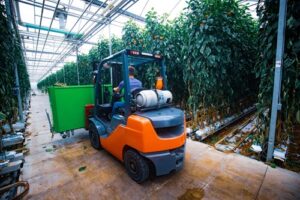
Camso’s Intensity Calculator Delivering the Best Product Choice for Client
In July 2018, Michelin completed the acquisition of Camso for $1.45 billion dollars. This acquisition now allows Camso to leverage the two brands in their product offering to clients in the material handling sector. How do these two brands work together as an offering to the market? Stratton explains, “In operations such as ports, Michelin have a very strong large radial range on some of the bigger container handling vehicles and then in trailer operations where Michelin weren’t as strong, the former Camso brands were. With these combined portfolios, we will be able to see where our gaps are and where the opportunities are to bring new products. And then it’s same situation with ground support vehicles. I think a big part of our focus over the next few years will be bringing these organisations together and then bridging those gaps to make sure we have a really strong offer to the marketplace.”
Although Stratton concedes that there are gaps, the full radial range from Michelin in combination with Camso’s solid tyres and bias pneumatics gives the company a ‘phenomenal line-up of products’ which in material handling space begins with the Resilient series in solid pneumatics which comes in three tiers: 330, 550 and 660. The correct tire for your vehicle is guided by a concept called “Usage Intensity”, in which Camso believe to get maximum life out of the solid tyres it is critical to match the tyre to the intensity level of the application. This concept led and drove the development of Camso’s Intensity Calculator. The Camso Intensity Calculator gives the user an intensity score and the correct resilient and press-on tyre for your application.
Darren Stratton went into detail on the thinking behind Camso’s Intensity Calculator, “Everyone wants the most amount of life out of the product, so we decided to focus on how much performance customer’s need thermally out of a tyre. Since it is a solid tyre, the heat will build up internally regardless of what’s going on in the environment and at a certain point it will reach a limit and the tyre will fail. So, we needed a way to focus on the performance you need out of the tyre. Therefore, we developed a series of tools that will guide you towards the tyre that you need and in most cases it isn’t the highest performing tyre.”
Camso’s intensity calculator is another example of the company’s commitment to delivering the best possible solution for its customers by discovering what their specific needs and requirements are and delivering upon those findings. When we emerge from the rubble and debris left behind by COVID-19 and the chaotic supply-chain environment, we have experienced over the last, Camso’s foundations laid during this period by listening to their customers and helping them select the correct product for their job will stand them in good stead.





